Claire van den Heever and Iain Manley are a South African couple who, after eight years of traveling and living abroad, are now slowly making their way home, across Asia and down Africa’s east coast to Cape Town. They are both published authors and their travels across Europe, Asia, and Africa are documented at their blog Old World Wandering. Please enjoy this week-in-the-life of Claire and Iain traveling from Laos to China!
This post was originally published in 2012. It has since been updated for accuracy of links and content.
Day 1: Sunday
5am – Neither Iain nor I have slept. Blurry eyed, I attach my freelance work for the month to an email and click ‘Send’. Iain is responding to someone on Twitter – still wide awake in the US – who’s just backed our Kickstarter campaign. We rush to our room and start packing. After three months in Luang Prabang, we’re leaving for China – in an hour. I’m shoving things into my bag, throwing others away, and wiping dust off a pile of books that we never did swap at the book exchange.
6am – The tuktuk’s here.
6:05am – Throw everything into the tuktuk. Noi, the owner of our guesthouse, is calling her husband: “Boon Ping! Boon Ping!” I say not to wake him and give her a hug. “See you next year,” she says. “I hope so,” I reply.
6:10am – The tuktuk won’t start.
6:15am – Another tuktuk arrives.
6:25am – The driver stops outside a guesthouse.
6:35am – A man emerges in a Beer Lao vest and sunglasses. “The bus only leaves at 7:30,” he groans, adjusting his sunglasses. “I’m still totally drunk. Sorry. Very sorry…”
“Have you been to Vang Vieng before?” he asks.
Um, we’re taking a bus to China,” I say.
Oh, China. Nice. Lots of people.”
6:45am – A tourist at the bus station approaches us. “How much did you pay for this bus?” he asks.
Iain tells him.
Aw, okay. The bus was much better in the picture.”
Oh,” I shrug.
7am – We climb aboard and laugh somewhat hysterically at the child-sized bunks. We’re both asleep in minutes.
10am – The bus makes a toilet stop in a small town. In front of a snack shop, two large monitor lizards share a cage with a furry rodent – a bamboo rat, says Iain. A dark-skinned Chinese man crouches beside it, smoking a metre-long water pipe.
10:15am – Back to sleep.
1pm – We pass clusters of rattan homes with satellite dishes, and thatched roofs dotted amongst the brilliant green of rice fields, hills and forest.
4pm – Line up for our Lao exit stamps at Boten, the Lao-Chinese border. An enormous golden archway with a stupa on top marks the border. The water pipe smoker washes his pipe in a stream before lighting up.
4:20pm – Drive to the Chinese side. “Everything out!” the driver shouts in Chinese. “Don’t leave anything inside!” We all climb out and put our luggage on the ground for inspection. An official asks Iain and I to open our backpacks. He casually prods a few items and sends us on our way.
4:30pm – We’re first in line at immigration. There are none of the questions we’re used to from other Chinese borders: What is your job? Why do you have a Chinese student visa in your passport? Why are you in China now? No questions at all, just a slight pause when the official turns to Iain’s Taiwanese visa.
5:30pm – The bus heads north into Yunnan.
6pm – “One hour for dinner,” the driver shouts in Chinese. Three New Zealanders climb off the bus, looking lost. We eat a dinner of typical jiāchángcài (home-style dishes) together.
7pm – We’re driven out of Mengla. There’s nothing to distinguish it from anywhere in China. If the buildings were taller, we could be in our old neighbourhood in Shanghai.
Day 2: Monday
5:30am – I’m woken by shouting: “Xiàchē! Xiàchē!” We’re in a parking lot on the outskirts of Kunming. Two women have climbed aboard to sell people onward transport. It’s still dark. The driver shouts above them: “We’re early, so finish having a proper sleep. Finish sleeping!” I have no desire to hurry into the city centre so early. Neither does Iain. We go back to sleep on our tiny bunks.
5:45am – The women are back on the bus, shouting in Chinese. “You’re going to miss your flight! What time is your flight?” Men’s half asleep voices reply: “Only at 10am…”
6am – “You’re going to miss your flight! My miànbāochē is leaving now!” Somehow, I sleep through it.
6:45am – The smell of strong cigarettes wakes me. All the passengers, besides Iain, me and the three Kiwis, have left. I find a man with a miànbāochē – a bread loaf-shaped van – then wake the others up.
7:45am – The driver drops us near a hostel in the city centre. A hot shower and clean clothes, and I’m revived.
9:30am – We order an enormous Mexican breakfast at Salvador’s Coffee House.
11am – Plug into the internet with a network cable. We’re dying to know what’s been happening with our Kickstarter campaign over the last 30 hours. “Two new backers,” says Iain, first to load the site. He tries to get onto Twitter, but our VPN isn’t working. We move to a nearby café with WiFi. Twitter and Facebook load.
3:30pm – We go to a restaurant serving Yunnan cuisine, but the chefs are sitting down to a meal. Come back in an hour, they say. We wander around the neighbouring streets, every inch crammed with shops. Luang Prabang and Kunming feel like they belong in different universes. Neither Iain nor I can remember a road or rail journey between such disparate places; 25 hours on a bus is far longer than we usually travel in one go.
4:30pm – The chefs are ready to feed us. We order fried goats cheese, a kind of flat potato fritter and spicy lotus root salad. When it arrives, we realise we’ve muddled up two Chinese words and ordered deep fried goats cheese instead of the grilled dish we love, but the salad is even better than I remembered. Iain eats virtually the entire pizza-sized potato bǐng.
8:30pm – I go to bed with a sore throat. Iain whiles away a few hours on the roof with his journal and a beer.
Day 3: Tuesday
7am – My alarm goes off. I’d planned to go for a run in the park, but my throat still hurts. Back to sleep.
8am – Shower, pack, check out. We bump into the Kiwis downstairs. They’re taking our advice and seeing a bit of Yunnan before racing to Beijing.
9am – After another indulgent meal at Salvador’s, we’re online again – until the internet dies.
11am – Back to the café with WiFi. Iain publishes a blog post about our Kickstarter campaign while I catch up with emails.
2pm – Iain rushes off to buy us a new phone; our old one got wet in Luang Prabang.
2:45pm – He’s back, buzzing with adrenalin. We have a new phone with the English software we need and a sim card with a countrywide rate. Plus they agreed to throw in a spare battery – all in less than an hour, in Chinese. So much for being rusty.
3:30pm – Grab our luggage from the hostel and head to the train station.
4pm – This bus isn’t going to the station, the driver tell us. We scramble to change buses with all our bags. The other passengers look alarmed.
5:30pm – The train leaves exactly on time.
5:45pm – An attractive Chinese woman with unusual, delicate bone structure and wide eyes is lying on the bunk opposite. An attendant approaches and asks her for ID, and her child’s name and height. She’s going to Guangzhou, like us. No one else is asked anything.
6pm – The dinner trolley arrives. I buy a boxed meal of rice, mushrooms, green vegetables, fried pork on a stick, half a salted egg and a big red jalapeno.
9:30pm – A beer would be nice, but the trolley hasn’t reappeared. I go to the buffet car, which is full of black-uniformed policemen. I buy two cans of Guangdong beer from a box.
10pm – The lights go off and we return to the buffet car, now empty. An attendant says we can’t sit here. I tell him the lights are off in the carriages. He grunts in agreement. Iain is working on his multi-part story of our trip along the Sichuan-Tibet highway. I’m reading through the manuscript of my book about Chinese art before it goes to print.
11:30pm – Bed.
Day 4: Wednesday
5:30am-ish – Awake at sunrise to a conductor shouting “Nanning, Nanning! This is Nanning station!”
5:45am – “Chī zǎofàn! Chī zǎofàn!” cries a man pushing a trolley. “Eat breakfast!”
9:30am – I begin a washing, tooth-brushing ritual with my things carefully balanced on sinks or clutched between my knees, then fill up the communal flask and make a cup of jasmine tea.
11:30am – Iain’s working on his computer; I’m reading my manuscript. The four-year-old opposite us is getting restless. He hasn’t got anything to occupy him besides his mother’s phone. No books, toys or colouring books.
11:45am – The lunch trolley arrives. It’s the same food as yesterday, except there’s a pathetic looking chicken wing instead of fried pork. The noodles we saw on a passing trolley yesterday are finished, the lunch lady says. Iain reluctantly opens a rice box meal, muttering about cabbage.
2pm – The train rolls past bamboo groves and banana palms, reminding us we’re in south China. We pass several villages. Some homes are brick and quaint; others are concrete, and – like modern China – only half built.
The village temples have curled roofs adorned with prowling dragons. Some have a bright new layer of paint, and remind me of Vietnamese Buddhist temples. Iain and I talk about how southern China’s temples are more elaborate than northern China’s. India, we agree, is the same in its way: temples in India’s south are also more architecturally complex than those in the country’s north.
4pm – The poor four-year-old is beside himself with boredom. Still no sign of anything for him to play with in his Mickey Mouse backpack. “Do you like to draw?” I ask. “Draw?” he says bashfully. I hand him a pen and a piece of paper. He’s thrilled. He fills the page with eggs, mushrooms and a house, showing me. His mother, also bored, takes the pen and writes a row of numbers. “Copy the numbers,” she says. He tries, but they are malformed. “Didn’t your teacher teach you to draw numbers?” she laughs. He surrounds the numbers with mushrooms. She draws more numbers. “Write these: two, three, four.”
8:15pm – Iain and I are funnelled with tens of thousands of people through Guangzhou Station. It’s been raining. We slide in sandals across a few hundred metres of tiled ground towards the ticket office, but the queue looks an hour long.
8:45pm – We take a taxi to a cheap hotel, near Sanyuanli, where most of the African community stays when they’re in the city. Guangzhou has a floating population of between 100,000 and 200,000 African traders and business people, and Iain plans to do research for a story about the community.
9:15pm – A hotel nearby looks like a better choice. We check in. The room is large and well-appointed. In fact, it has more paraphernalia than I’d know what to do with. Apart from a kettle, TV, slippers and instant noodles, there’s an array of “non-complimentary” items: four kinds of condoms, a manicure set, two toiletry kits, and two bottles of 35% alcohol in a cardboard stand marked “Man drink woman drunk”.
11pm – After a long shower, I happily crawl into my rock hard bed.
Day 5: Thursday
10am – I take the subway to Guangzhou station and resurface among a crowd. The enormous station, the sea of people, and something about the dimensions make me instantly think of India, which was probably the last time I saw so many people in one place.
10:20am – I reach the ticket window and ask for a train to Xiamen, where a friend is joining us. “Méiyǒu,” the clerk says. “No have.”
How about the next day, the 9th?”
Méiyǒu.”
The 10th?
Méiyǒu.”
11th?”
Méiyǒu.”
10:45am – I go for a run along a shaded path in nearby Yuexiu Park before taking the subway back to my hotel.
12:30pm – Iain is reading about Guangzhou’s African population. He heads out to Canaan Market, hoping to interview some of the business people that his article will focus on.
3:30pm – He’s back. Everyone he met was too busy to stop and talk for more than a moment. He hopes he’ll have more luck tomorrow when he plans go to a mosque on the advice of a contact who made a documentary about the Nigerian community.
Day 6: Friday
8am – Move to another hotel to avoid a rate increase.
11am – Take a subway to Huaisheng Mosque, one of the world’s oldest. Four men greet us at the entrance. One shakes Iain’s hand warmly. “Are you Muslim?” he asks, smiling. “No,” Iain replies. “Oh, then you can’t come in.” I stand behind him, dressed in a modest salwar kameez. He explains his interest in Islam and the history of the mosque, but they only shake their heads.
12pm – We take the elevator to the top floor of a hotel, hoping to get a glimpse of the mosque. Meet a friendly man from Uzbekistan in the elevator. Even from the roof, the mosque is hidden by trees. Its glossy green Chinese tiles peek through the leaves, beneath a towering stone minaret, but we can’t see anything else.
12:30pm – Order lamb kebabs, nang bread and chilled rice noodles at a Xinjiang restaurant which is bustling after Friday prayers.
5:30pm – I get ready to visit a former student of mine from Shanghai. Iain’s spending the evening writing.
6pm – Rush hour. The receptionist suggests a somewhat complicated subway journey, followed by a taxi.
7pm – Taxis are in short supply.
7:30pm – A driver in an empty taxi says he’s too hungry to take me anywhere. He simply has to eat dinner. I’m already late. He agrees to drive me as far as he’s going.
7:50pm – I change taxis.
8pm – A whole hour late, I arrive at my friend’s apartment. It’s halfway across the city, so he understands. We sit down to a delicious spread of about seven dishes, cooked by his mother. She and his father are visiting; his wife is pregnant and due in 19 days. We have a lot of catching up to do. It’s been twenty months since I last saw him in Shanghai, when Iain and I left our lives there to travel across the Old World. We chat and chat, switching between English and Chinese for his wife and parents’ benefit, and eat slowly, but extremely well. This is the China I like to remember.
Claire and Iain are currently in southeastern China heading north to Shanghai, from where they’ll begin an overland route they’ve planned for years: Shanghai to Cape Town. Check out their crowd-funding project on Kickstarter; if it succeeds they’ll write a series of long-form dispatches about the people and places they encounter on their journey across the Old World. They’re also planning to write a book about it once they reach Cape Town. You can follow their journey at Old World Wandering.

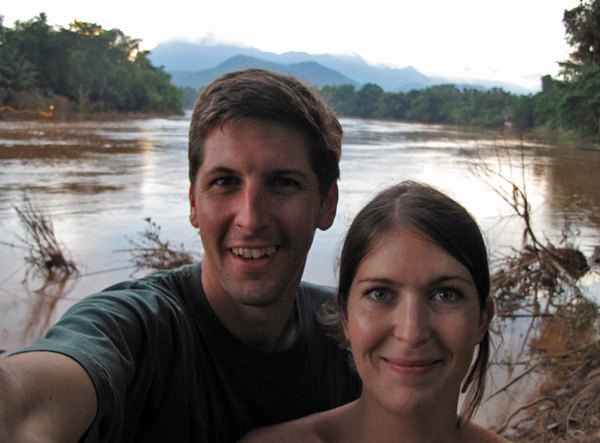
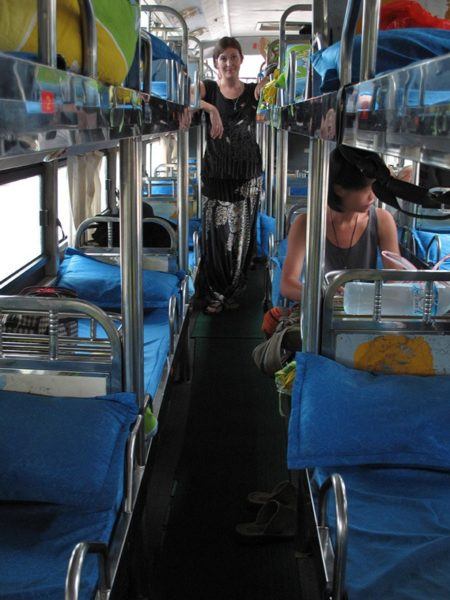
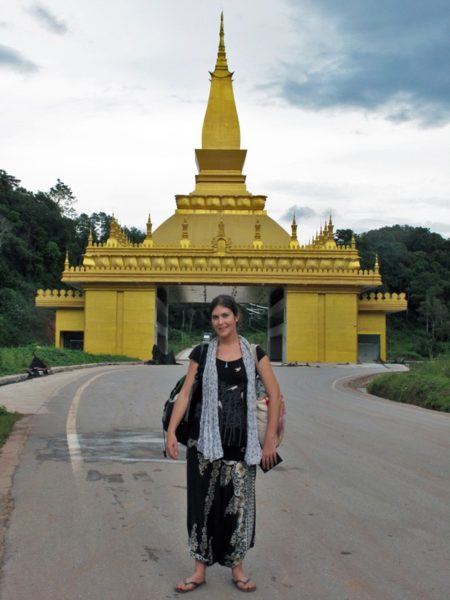
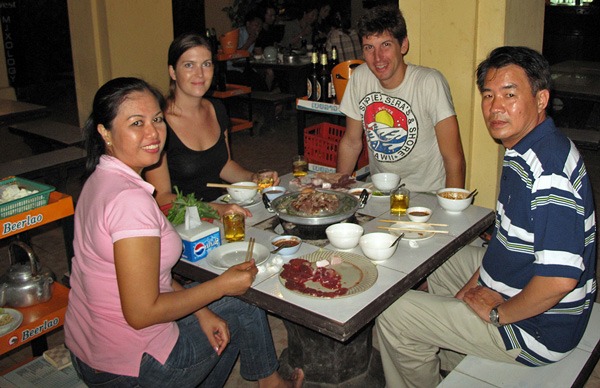
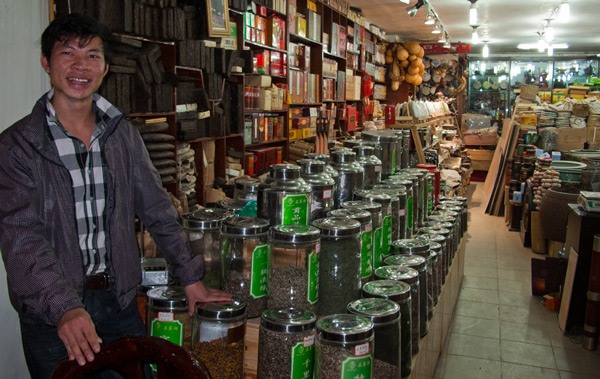
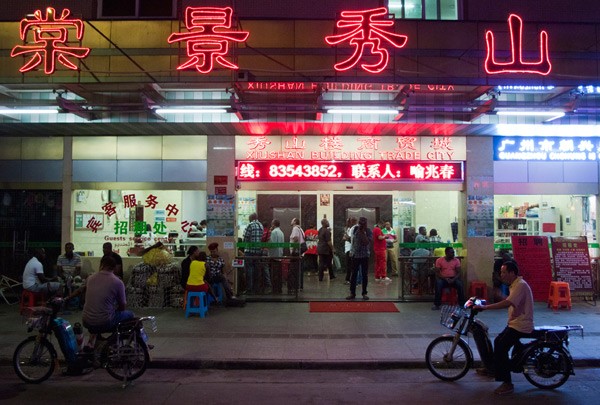
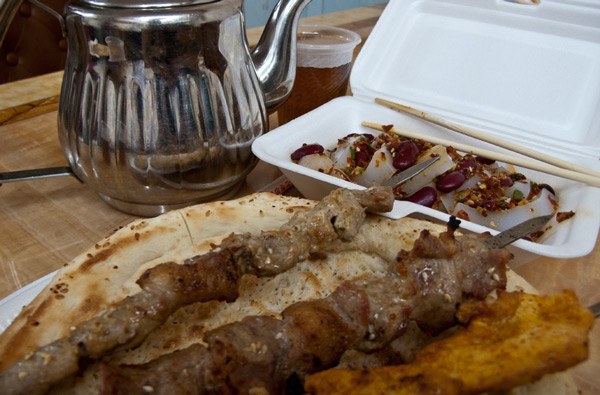

Firstly, I would like to thank you for following me on Twitter! I found this article about your China trip really very interesting. The agenda type article involved me to follow your travel experience in China step by step. Thanks for sharing everything in detailes. Loved it!
Twitter: Dervis @TravellersBlog
@Dervis – Thanks for stopping by! I’m glad you liked Claire & Iain’s week-in-the-life. Stay tuned for lots more long-term/full-time travel adventures from lots of travelers!
Hey great article! Very interesting!